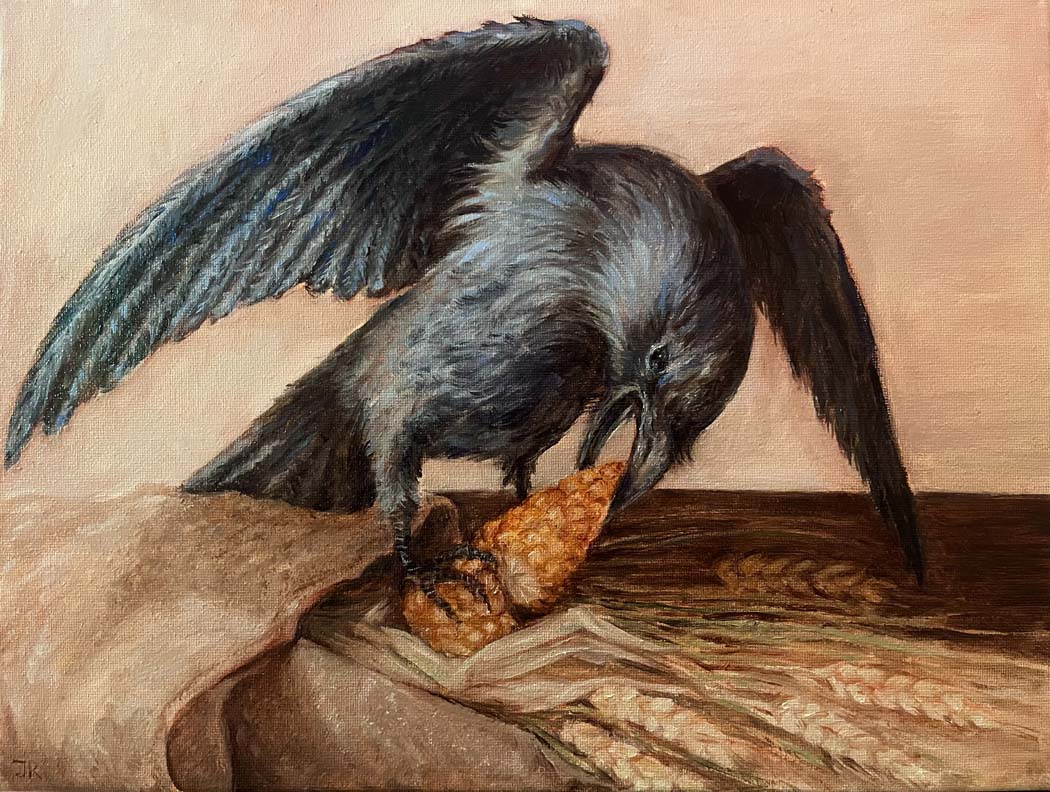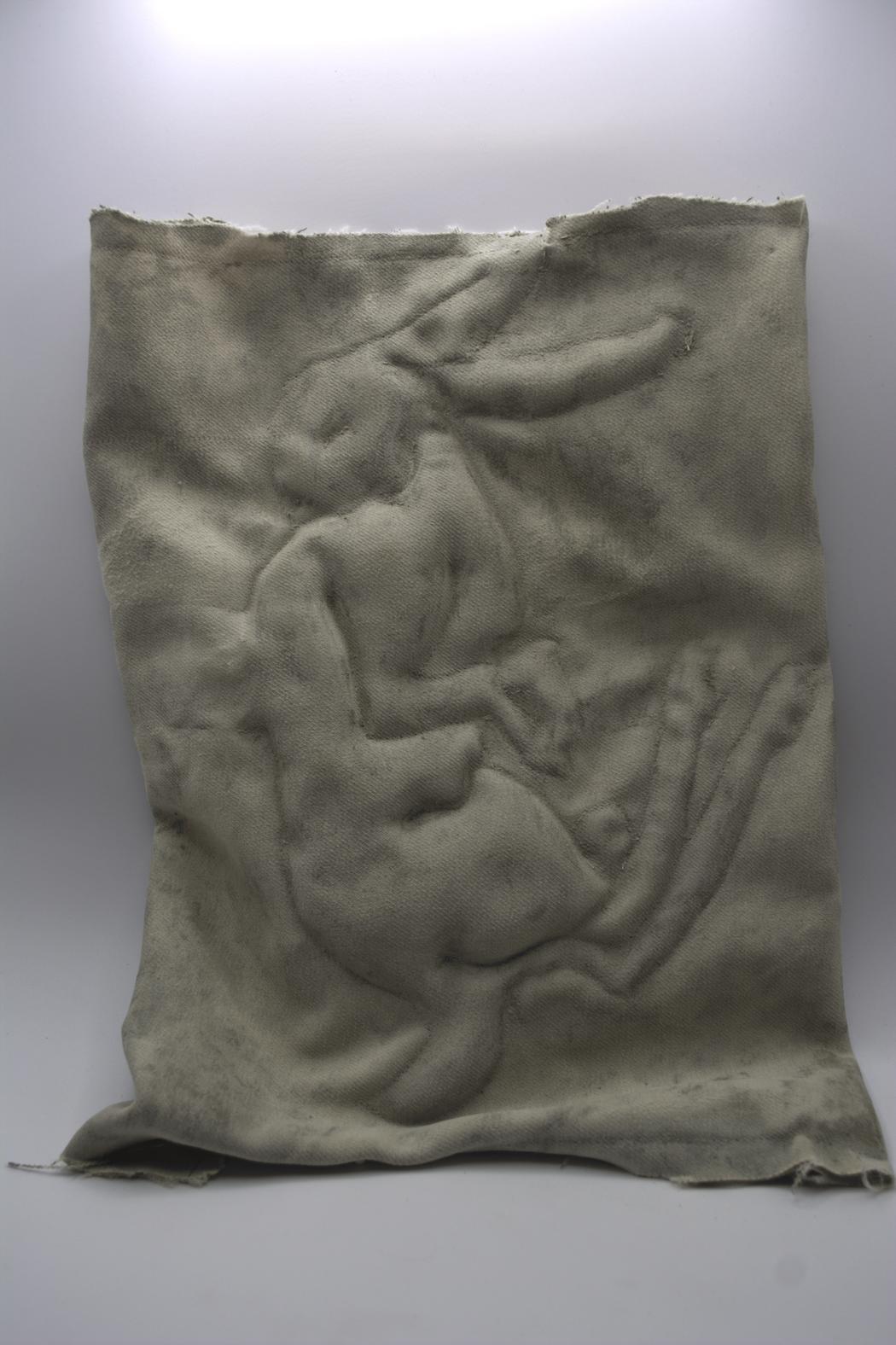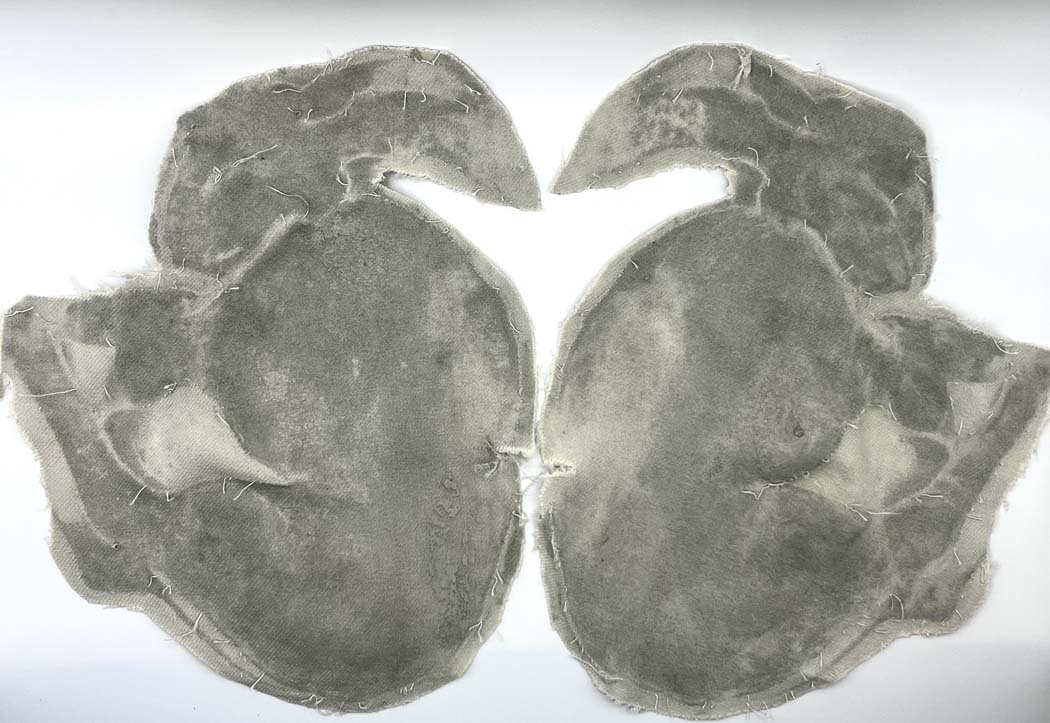Julia Rabius
Where do you live: Virginia, USA
Your education: BFA in Art Education, Minor in Art History from VCU
Describe your art in three words: Narrative · Sculptural · Reflective
Your discipline: Sculpture and Painting
Website
 Julia Rabius | Ravenous | 2025
Julia Rabius | Ravenous | 2025
What initially drew you to working with materials like cloth and concrete, and how did this combination become central to your sculptural language?
I was drawn to the combination of cloth and concrete because of their opposite nature. One soft and temporary, the other rigid and lasting. When I began casting using cloth and concrete, I realized the process preserved small gestures and folds in a fascinating way. The pairing became a way to capture something fleeting before it disappears, to solidify what’s usually lost.
Rabbits appear as recurring figures in your work. What personal or symbolic meanings do they hold for you?
Rabbits started not long ago as a representation of my own self and body. They feel domestic, yet there’s always an undertone of survival. I was given the title of a “rabbit” by someone influential in my life experience and my sculptural work tries to study that title, and disagree with it.
 Julia Rabius | Lure | 2025
Julia Rabius | Lure | 2025
In “The Food” and “Lure,” the process of molding and removing fabric becomes part of the narrative. How do you think about the boundary between creation and destruction in your practice?
That boundary is where most of the meaning happens for me. There is an inevitable loss with each piece, but I do not think they are perfectly whole within the mold either, so peeling away the texture is less a destruction as it is a reveal.
Your sculptures capture soft, fleeting textures in a very permanent material. How do fragility and permanence interact as emotional elements in your work?
I think of them less as opposites and more as companions. Concrete isn’t permanent in a romantic sense, it can crack, erode, crumble. When it holds the imprint of something delicate, it becomes a kind of fragile permanence. I like to think about it like a fossil, fragile, but permanent.
 Julia Rabius | The Food | 2025
Julia Rabius | The Food | 2025
Can you talk about the tension between innocence and vulnerability in your pieces? How do these themes connect to personal history or lived experience?
I have missed many milestones in my life and it has resulted in me feeling semi stunted. While growing professionally and developing my conceptual thinking, somehow the rest of me has been left behind in those leaps.
The artwork “Ravenous” began as a gift but changed meaning during the process. How often do your works shift emotionally as you create them?
Almost with every piece. At different stages in my art I always hesitate, wanting to stop and hold onto the current feeling but I often have to force myself forward to completion. Ravenous reminded me that intention isn’t fixed; whether cognitively or not while painting I was symbolizing my relationship with the raven, at the time I thought I was being thoughtful and honest, now even I can see the hints I left for myself in the piece.
 Julia Rabius | Twin Pieces | 2025
Julia Rabius | Twin Pieces | 2025
Teaching young students involves nurturing curiosity and experimentation. How does your role as an educator influence your studio practice — and vice versa?
It has a huge influence, partially because the experiences and emotions I carry home from teaching end up in my art. My artwork has personal stories and narratives in each, and there’s no place on earth where you hear as many stories as an elementary school. In a way it also forces me to create even if uninspired or exhausted. For my students I have to develop myself, so I cannot stop being an artist to just be a teacher.

Leave a Reply